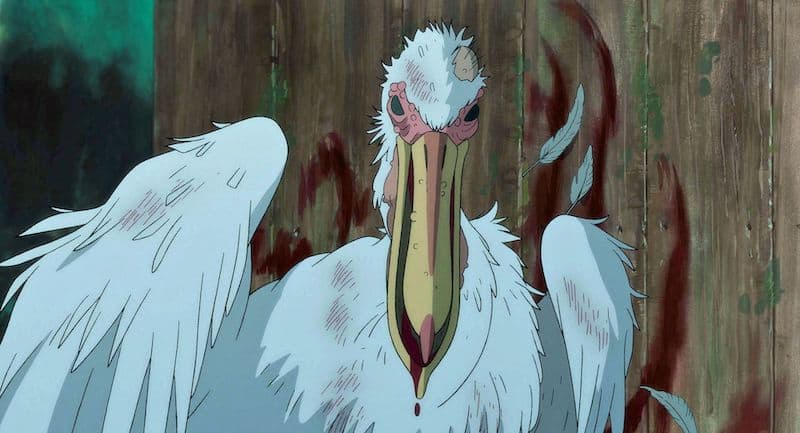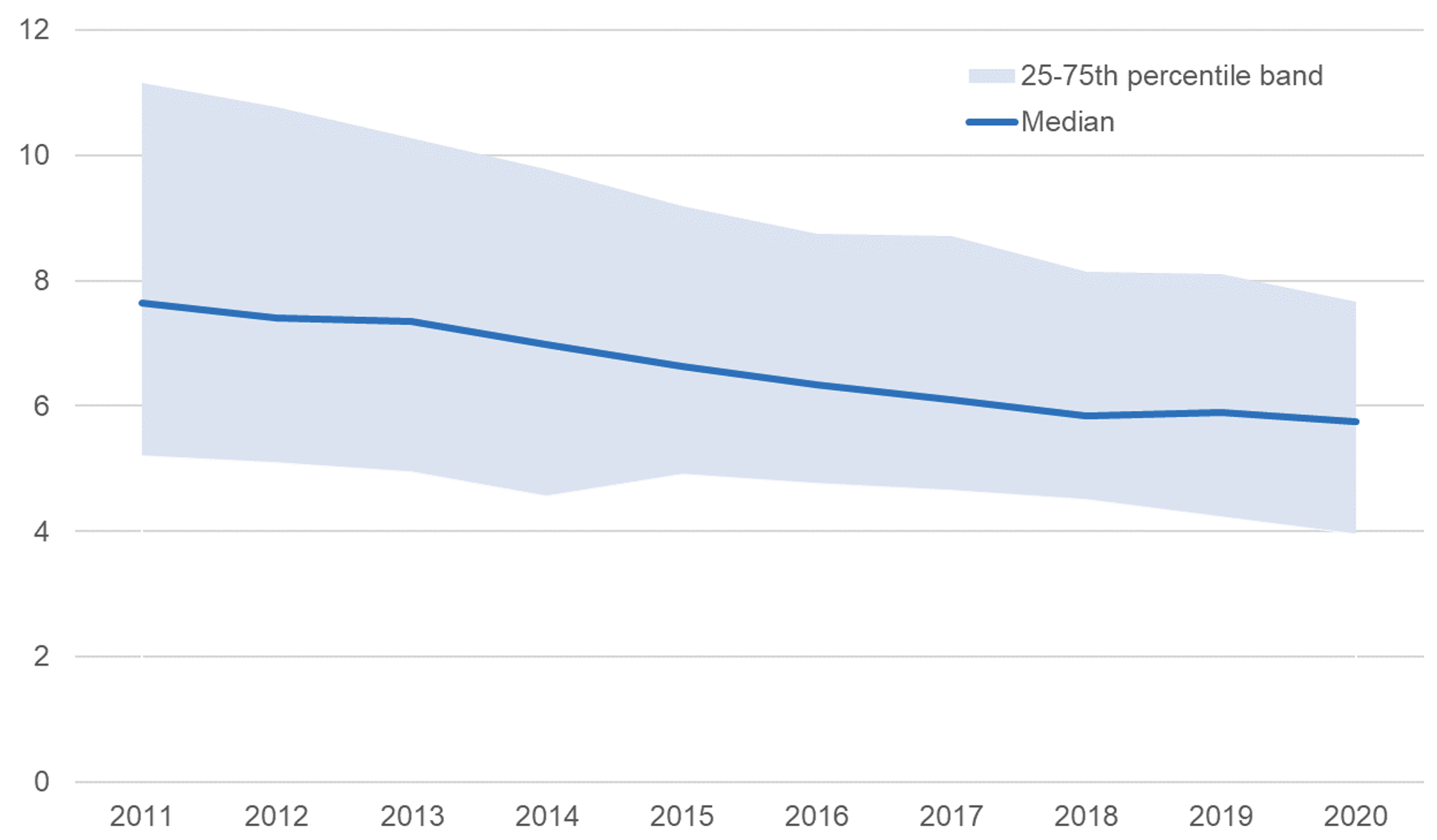Come for the visuals and lead performance, but prepare to be bored by endless hallucinations.
It’s not unheard of for a filmmaker to remake their own movie years or even decades after the first. While most instances involve directors remaking their non-English originals for American audiences, people like John Ford, Alfred Hitchcock, and Frank Capra have remade their work for other reasons. It’s that second group that Anthony DiBlasi lands in with his new supernatural chiller Malum, a retooling of 2014’s Last Shift. The killer premise is retained while character details and nightmarish visions are ramped up considerably. It’s an improvement in some ways, but it’s ultimately sunk by an excessive over-reliance on one particular choice.
Jessica Loren (Jessica Sula) is a rookie cop whose first assignment is babysitting a police station on its final night before being shut down completely. She volunteered for the shift with an ulterior motive — her father was a hero cop who one year prior murdered several of his fellow officers at the station before taking his own life, and she’s determined to find the truth behind his actions. His apparent breakdown came after rescuing three young women from a cult and its leader, Malum (Chaney Morrow). Jessica’s search for answers offers up some immediate results, but the night soon takes on a life of its own as agitated intruders, grotesque visions, and truths she never could have imagined turn her surroundings into a nocturnal hellscape.
Like its predecessor, Malum is something of a mixed bag for viewers. Its technical merits are sound with some striking visuals, DiBlasi finds some genuine scares, the additional depth and purpose given to Jessica enriches the character, and Sula’s performance gives us someone to root for. The beats that work, though, are slathered with, and buried in, the narrative’s almost comical overuse of hallucinations.
It seems the cult’s grip hews closer to home than Jessica knew, but with new revelations come hallucinatory visions of things that aren’t real. She sees people and events, destructive behaviors, and life-threatening danger, often accompanied by loud music cues to scare viewers — only to blink and find it all gone. (That is not a knock on Samuel Laflamme‘s otherwise strong score.) The technique is fairly common in horror, but while a handful of imagined threats can stir up tension and uncertainty, DiBlasi inundates Jessica and viewers until the very end. They’re effective enough early on, but they quickly lose their power to frighten or unsettle and instead become tiresome. It begins to feel like a conservative estimate would put roughly a quarter of the film in the “imagined” box, and that’s just dull.
Malum‘s dependence on what’s not happening is a double shame as it draws attention away from the very real scares unfolding around Jessica. It’s the one-year anniversary of the events at the station, and the reportedly dead cult leader’s followers are causing havoc in the streets of the city. The film’s budget prevents us from seeing it, but DiBlasi ensures we feel the tightening atmosphere of it all as some of the crazies breach the police station’s exterior. He and cinematographer Sean McDaniel do fantastic and frightening things with light and shadow — shots in the station’s basketball court (fancy!) and holding cell make perfect use of the darkness — and the threat of these cultists is made tangible and terrifying. While it clearly cost more than the earlier film, Malum is still a low budget horror movie, but that doesn’t stop DiBlasi, McDaniel, and production designer Nicole Balzarini from taking full advantage of their contained locale.
The gore effects are another plus as they deliver the solid and meaty goods. Russell FX do great work envisioning how easy it is to destroy human flesh, and while it doesn’t reach Terrifier 2 (2022) levels of carnage it’s still effectively gruesome. There are supporting players roaming these halls, but the film is essentially Sula’s show. She quickly shows that she deserves the spotlight with a performance channeling both determination and fear. The script (by DiBlasi and Scott Poiley) lets her down some — she’s a legit terrible police officer, not in an #acab way but in that she’s just very, very bad at her job — but you wholly buy into her situation (imagined threats aside).
The script’s additional details regarding the cult and Jessica’s connection to it work well to unsettle and build tension, and terminology like the ominous-sounding “low god” find dread easily enough. As with Last Shift, Malum‘s riff on John Carpenter’s Assault on Precinct 13 (1976) and Prince of Darkness (1987) kicks off a fantastic premise as outside threats worm their way inside. A recognition of police abuse hits its mark too with one officer admitting “That’s what cops do, we hurt people.”
Those pesky hallucinations quickly sour it all, though, leading to an ending that feels unearned and lacks the emotional impact of the one in Last Shift. If nothing is real, then nothing is scary, and that’s unfortunately where Malum decides to focus its attention. It’s worth noting that, as will all art, horror movies are a subjective beast. The elements that work well here are plentiful, meaning viewers unbothered by an over-reliance on hallucinations may be more than happy with the results.
Related Topics: Horror
Recommended Reading
















